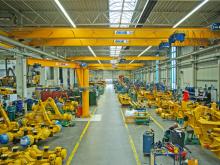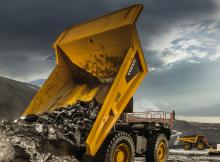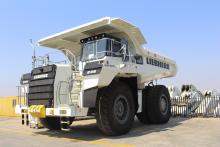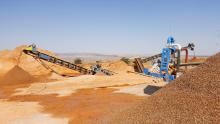Following massive operational gains reaped since the decision to deploy
The recent purchase of construction-type Scania mining tippers underlines PPC Slurry’s complete migration from the use of conventional yellow metal rigid haulers the operation has previously run for the past 100 years.
Speaking at the handover ceremony of the three new acquisitions, Andre Niemand, technical advisor: Mining at PPC Slurry, reiterated that the Scania solution has ticked all the right boxes for the operation, and it has become a haulage solution of choice for the operation moving forward. “We will stick to Scania’s mining tippers for our haulage needs. The Scania mining solution has lived up to the standard we want. Through continued consultation, Scania South Africa has managed to provide a durable and reliable solution that fits our bill,” explains Niemand.
Niemand says Scania’s willingness to tailor the trucks to Slurry’s unique specifications, and the lower total operating costs, were the major reasons behind the latest buying decision. This includes an up to 20% saving on maintenance costs and massive fuel savings of up to 50% compared with the previous range of conventional yellow metal haulers.
As a result, PPC Slurry is planning to place an order for two more units early this year to bring the total complement of its Scania mining tippers to nine. This is in line with the operation’s production targets. “As we will commission our new Kiln 9 this year, we will need to put 15,000 tonnes of material through the crushers a day, translating into 1,000-1,200 tonnes/hour. With the current range of 32-tonne Scania mining tippers, we will need a total of nine to meet these targets,” says Niemand.
When the existing units reach their replacement cycles, Niemand will, in future, look to acquire the recently-launched 40tonne Scania G460CB8x4EHZ mining tipper units. The 40tonne mining tipper will meet Slurry’s targeted production volumes with a total of seven trucks. For Niemand, a key benefit is the reduction of total vehicles operating on site, obviously with safety in mind.
Meanwhile, getting rid of the few remaining rigid haulers on site will allow Slurry to scale down its loading tools as well. The current generation of Cat 988 loaders will be scaled down to Cat 986 front-end loaders to suit the size of the Scania mining tippers. This translates into reduced fuel consumption, due to the smaller size of the loader, while a major saving in the upfront capital cost is very apparent.
Following extensive consultations, facilitated by the more than customer-supplier relationship which Charnie-Lee Adams-Kruger and Ruben Govender, key account managers – Mining at Scania South Africa, have forged with Niemand and his mining crew at Slurry, several improvements have been made to the new tippers recently delivered to PPC Slurry.
The major improvement relates the bin, which was previously a major concern on the early Scania units delivered to Slurry. “One of the key drivers for this sale was the interaction between all the key stakeholders, including Scania, PPC Slurry and the body builder. We invited the body builder to site to study the operating conditions at Slurry, which ultimately informed the design process of the bin. Bearing in mind that this is a mining application, there was need to choose correct partners because productivity is the most important thing,” says Govender.
“We had the coordination of all critical role players to be able to offer a custom-built solution to Slurry,” says Adams-Kruger. “We have just delivered a bespoke solution to the customer. This vehicle is specifically suited to Slurry’s operating conditions and may not necessarily be easily deployed to any other operation. This was designed with the needs of the specific customer in mind.”
The first major improvement was the enhanced substructures of the bin to be able to absorb the impact of the material thrown into the bodies. “The material used is suited to real heavy duty mining. The projected life of body has also greatly improved through addressing all the stress points in the bin,” says Govender. According to Niemand, this approach will allow the new bodies to last longer than the previous ones. “The bin has been made stronger and we believe it will last between two and three chassis,” he says.
A second major improvement is the provision of a double hydraulic cylinder, moving away from a single-cylinder approach on the previous versions. “The dual hydraulic cylinder approach has improved both speed of tipping and stability, mainly addressing the customer’s safety concerns with a single hydraulic cylinder,” says Govender, adding that this stops any side movements or side articulation of the truck body.











